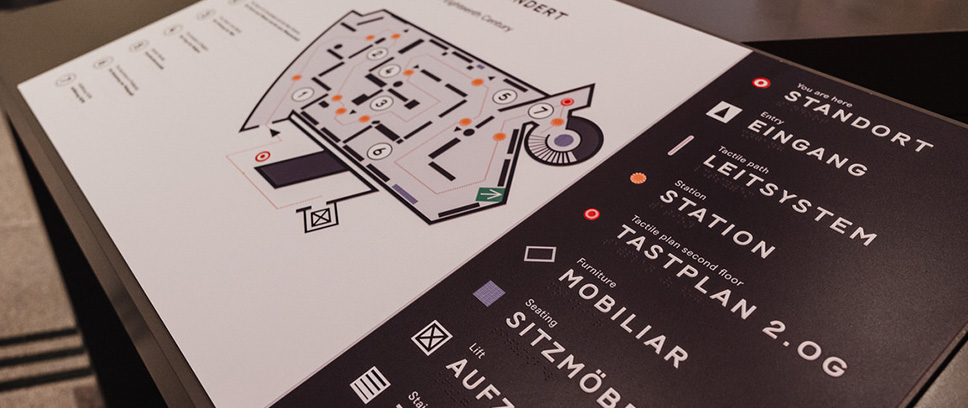
Breaking down barriers in proven and new ways
Inclusion in the exhibition “What is Enlightenment? Questions for the 18th Century”
Verena Günther and Brigitte Vogel | 26 March 2025
For the exhibition “What is Enlightenment? Questions for the 18th Century” the museum has explored both proven and new methods to realise its vision of the DHM as a “Museum for All”. Verena Günther and Brigitte Vogel from the department of Education and Communication report on barrier-free approaches to the exhibition.
For more than ten years the Deutsches Historisches Museum (DHM) has worked towards breaking down barriers and creating inclusive offers. The leitmotif and aim of taking cultural participation as a human right seriously has always been our top priority. With these efforts the DHM has set a standard for national and international institutions of culture and education that support the cultural participation of people with disabilities. People from Germany and abroad – from Japan, India, Austria, Great Britain, etc. – visit “What is Enlightenment?” and exchange ideas with our experts about the design of inclusive exhibitions.
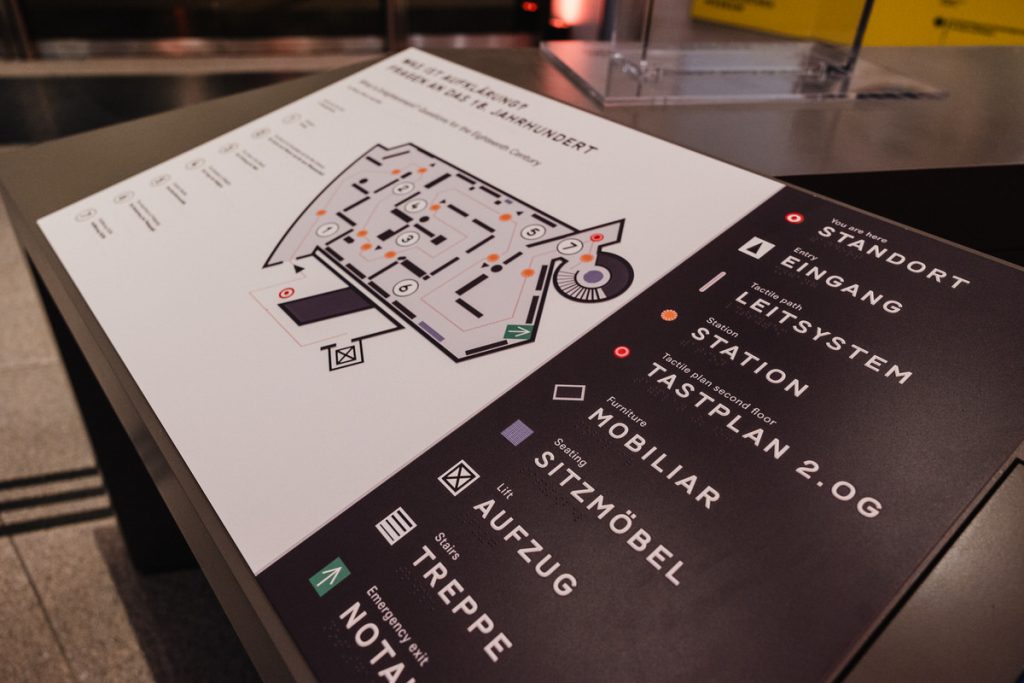
Participation of school classes with special education programmes
Seven multisensory and interactive stations, so-called inclusive communication stations, in the exhibition offer all visitors the opportunity to approach selected objects on their own by means of the senses of touch, hearing, smell or sight and thus gain an overview of the presentation. A project supported by the Federal Cultural Foundation has helped to realise the concept of inclusive communicative approaches for children and young people. It was developed in cooperation with three schools in Berlin and Brandenburg which specialise in “mental development”, “hearing” and “sight”. Classes from the Johann August Zeune School for the Blind, the Wilhelm von Türk School, and the Finkenkrug School participated over a period of several months in the project, which provided an intensive exploration of topics of the Enlightenment as well as a closer look at the museum work of DHM colleagues from the areas of Education and Communication, Restoration, and Registry.
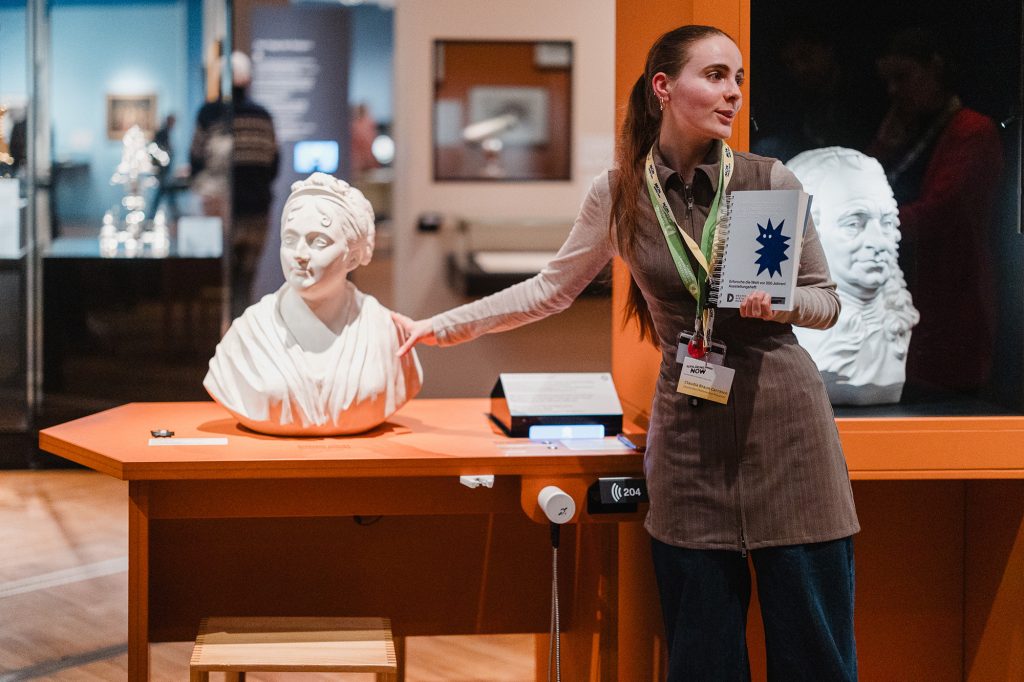
The schoolchildren became acquainted with the concept, themes, and objects of the exhibition. In several workshops conducted by the DHM team, they worked on their own creative contributions, which have become part of the presentation. These include the film “Debate in the Coffeehouse” in German sign language and a radio play about the life of Dorothea von Rodde-Schlözer. The children chose the topics, wrote the screenplays and scripts, and then stood before the camera and microphone. Other children dealt with the “character heads” of Franz Xaver Messerschmidt. They made their own artistic interpretations of the feelings expressed in these 18th century busts, which are also shown in the exhibition. Still other children studied the classification principles of nature in the example of the Xylotheque of the autodidact Carl Schildbach. Based on his models, they made their own “wood books” filled with parts of the elder tree. Their study of the plant with all of their senses inspired the concept of a “smell station” near the wood book in the exhibition.
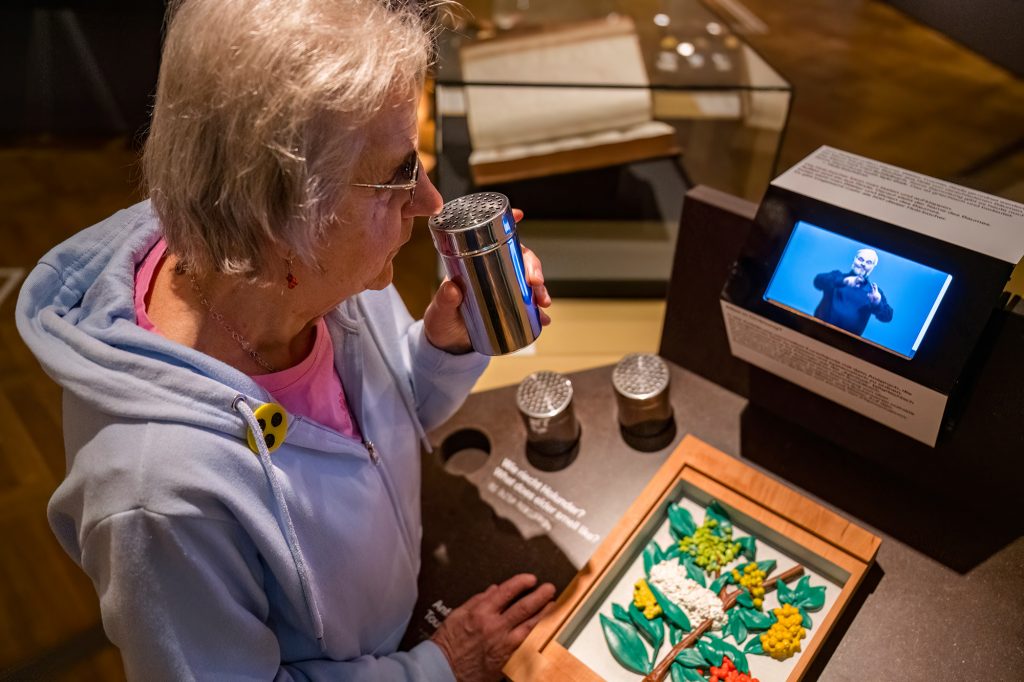
The cooperation with schools provided valuable impulses for the first production of an inclusive exhibition notebook. With the booklet, young visitors from eight years and older can set out on a discovery tour using all of their senses. High-contrast design, Easy Language and a tactile version using Braille as well as haptic and auditive elements help to render important topics more comprehensible. For example, the children can feel and experience the sun as a symbol of the Enlightenment or learn how the invention of hot-air balloon flights inspired the curiosity of 18th century society.
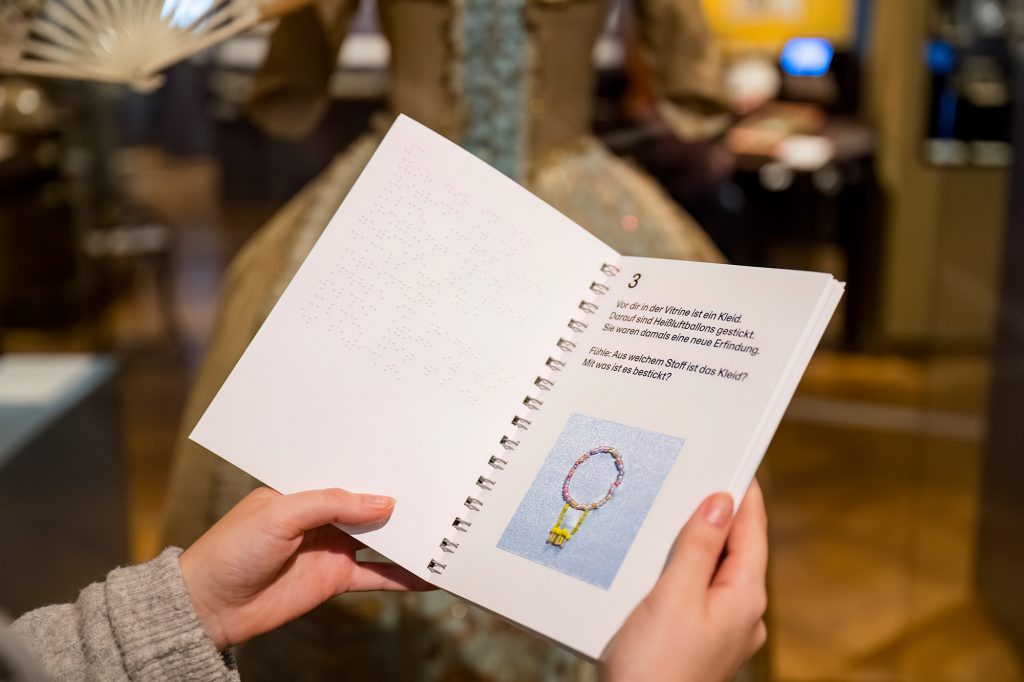
The DHM as a “Museum for All”
The proven inclusive exhibition design in the DHM consists of construction measures such as the tactile guide system on the floor and tactile overviews of the exhibition rooms as well as varying heights for the presentation of objects and showcases designed to accommodate wheelchairs. Central elements are the so-called inclusive communication stations, which provide access to their topics through interactive and multisensory means. Important is the added value for all visitors, for example by feeling the contorted face of Franz Xaver Messerschmidt’s “Grim Finster Man”. At the station you can also see your own grimaces in a mirror. Or there’s the model of a lightning rod, which serves as proof that the repetition of an experiment can bring success.
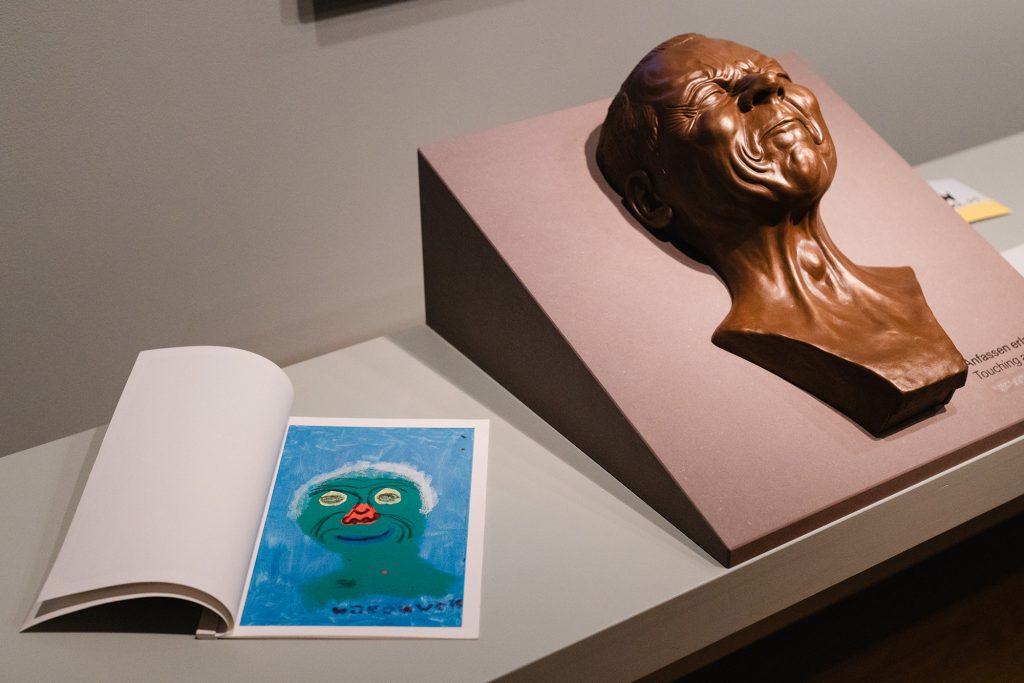
All of the main texts and certain other texts are offered in German, English, Easy Language, German Sign Language (DGS), and Braille. These are supplemented by audio descriptions and texts in large print for blind and visually impaired people.
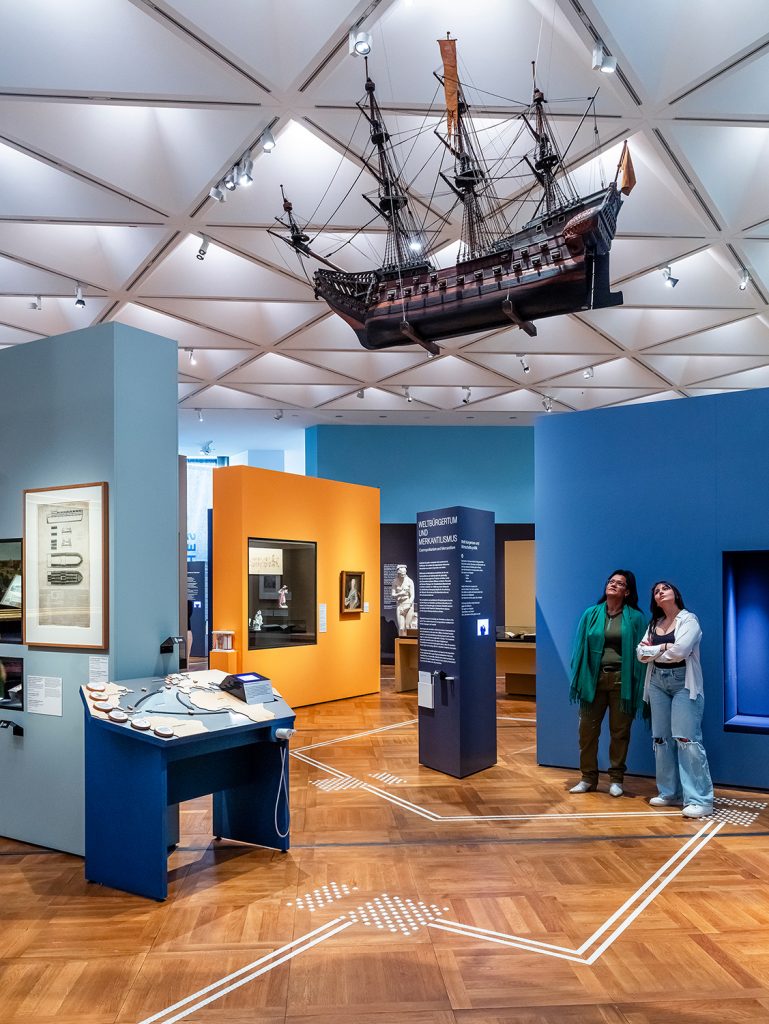
Like all other cultural institutions, the DHM also has to be accessible for people with disabilities. It is not that people are disabled, but that they are hindered by barriers to play an active part in society. That is why physical barriers must be removed and social prejudices and uncertainties overcome.